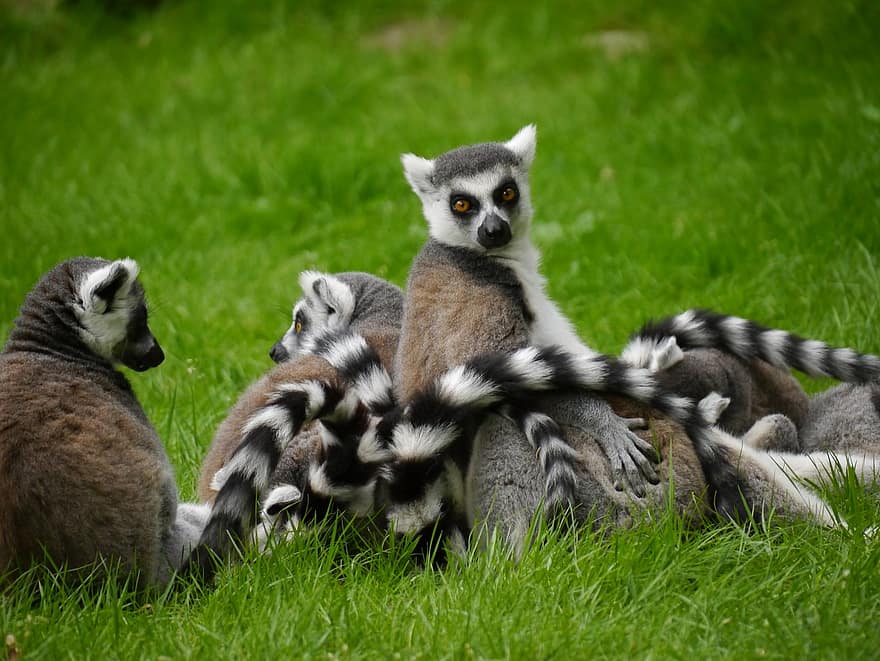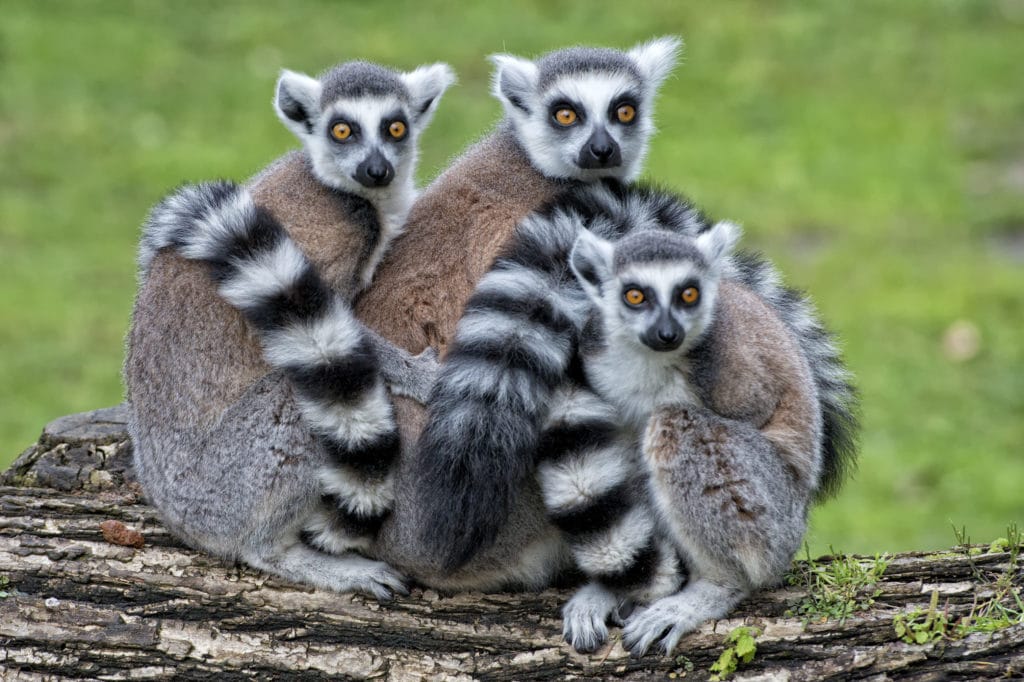Maki

The Catta lemur or Maki
Madagascar is a country known for its faunal and floristic diversity. The Big Island is home to several animal species, some of which are endemic. This is the case of the lemurs of Madagascar.
The Catta lemur or Maki catta is the most known lemur species. It lives mainly in the south of the island. It is characterized by a long ringed tail of white and black color. Being the oldest lemur of Madagascar, the Maki catta is the most emblematic of the country. Moreover, this animal is protected by the villagers, in the south of the country. The natives consider the lemurs as the reincarnation of their ancestors.

Presentation
The maki catta is a small lemur of about 2 kg, whose tail is about as long as the head and the body combined. In the male, the head is much stronger and the muzzle less elongated. The head is bicolored: the face is white with black areas on the top of the skull, around the eyes and the snout. These pear-shaped areas around the eyes bring out the golden iris, circled with black.
In both males and females, the body is almost entirely covered with a shiny coat, grey tinged with brown on the back and lighter on the belly. Some parts are hairless, revealing the black skin, especially on the wrists and scrotum. The tail, not prehensile, is characteristic of the species. Striped with 14 rings of white hairs of identical width, it is very full and measures about 50 cm long when the maki reaches its adult size, at 2 years. The animal walks with its tail erect when it moves on the ground, on all fours or on two legs, standing on its back legs which are longer than its front legs. The shoulders are a little wider in the male than in the female. The toes of the hands and feet are equipped with nails, except for the second toe, which ends in a claw called “grooming” that the animal uses to lick itself or the members of its group.
Very social animal, the maki catta enjoys very developed senses. It rarely loses visual contact with the group to which it belongs, the vision, excellent in the species, playing undoubtedly an important role in the recognition between individuals. If by chance a maki is isolated, it calls its fellow makis, never very far away.
The vocal repertoire of makis is very extensive: howling of group cohesion of a dominant male, in the evening or during the breeding season, to which respond the howling of other males and the high-pitched meows of females and young; rapid alert growls (about two per second) that intensify into barking, first weak and then louder, as danger approaches (accompanied by high-pitched, loud calls); high-pitched, piercing distress complaints or aggressive spitting and snoring in case of conflict. In some cases, these various vocalizations are supported by facial expressions.
The sense of smell is very developed in this species, which shows a very pronounced marking behavior.
Males have a large egg-shaped sebaceous gland on the front of the arms, near the sterno-humeral joint, about 3.5 cm in diameter, hidden in the fur. When pressed, a dark brown secretion with a very strong odor and a worm-like appearance escapes from its nipple-shaped opening. In the female, this brachial gland is replaced by a papilla not exceeding one centimeter in diameter, identifiable by 5 to 6 large hairs more colored than the others.
A little in front of the wrists, males and females have an antebrachial gland. By rubbing this sebaceous gland on their body or tail, they impregnate their coat with their own smell or mark their passage on trees. Males use it during scent fights.
Genital marking, which is common in all adults, is carried out thanks to the genital-anal sebaceous glands located on the scrotum and around the anus

Mode and Place of Living
The Maki catta lives in a group of about twenty individuals led, as in most lemurs, by a dominant adult female. She guides the troop during the movements and is the first to reach the food. The food is varied and depends on the seasons: flowers and fruits, young leaves, exudates, insects of all kinds, spiders and their webs, succulent plants in dry season…
The births take place almost all at the same time, when the food resources are the most abundant. From the age of three days, the young, until then clinging on the belly of its mother, is able to climb on her back or on the back of another close female.
The maki catta lives in the humid and dry forests of the island, the thorny thickets, the shrubby savanna.
It also evolves in the mountainous regions of the island.


Food
The Maki eats fruits, flowers, leaves, buds, bark and sap.
Omnivorous, the primate occasionally eats insects, spiders or small animals (birds, chameleons).


